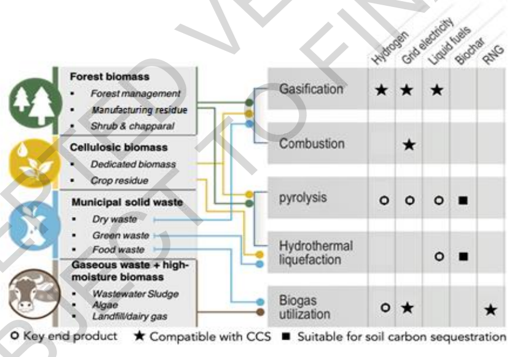Que dit le dernier rapport du GIEC sur la pyrogazéification et le biochar ?
Dans le cadre de son sixième cycle d'évaluation (AR6), le 3ème volet du rapport du GIEC, intitulé "Atténuation du changement climatique", a été rendu public le 4 avril 2022.
Présenté dans un contexte énergétique tendu, ce rapport fournit une évaluation mondiale et actualisée des progrès et des engagements en matière d’atténuation du changement climatique. Il explique l’évolution des efforts de réduction et d’atténuation des émissions, en évaluant l’impact des engagements nationaux en matière de climat par rapport aux objectifs d’émissions à long terme.
Pour produire cette somme, quelques 278 auteurs ont passé en revue 18 000 articles et suscité près de 60 000 commentaires de la part de la communauté scientifique, dans un volume de 3 575 pages réparties en 17 chapitres. Ce travail monumental a été synthétisé dans le "Résumé à l'attention des décideurs", approuvé par 195 gouvernements.
La synthèse finale de l'ensemble des trois volets de l'AR6 sera remise en octobre prochain.
Place de la pyrogazéification au sein des bioénergies
- Place des procédés innovants au sein des bioénergies :
“ Scaling up bioenergy use will require advanced technologies such as gasification, Fischer-Tropsch processing, hydrothermal liquefaction (HTL), and pyrolysis. These pathways could deliver several final energy carriers starting from multiple feedstocks, including forest biomass, dedicated cellulosic feedstocks, crop residues, and wastes. While potentially cost-competitive in the future, pyrolysis, Fischer-Tropsch, and HTL are not currently cost-competitive, and scaling-up these processes will require robust business strategies and optimized use of co-products.”
“ Besides BECCS1, biofuels production through pyrolysis and hydrothermal liquefaction creates biochar, which could also be used to store carbon as 80% of the carbon sequestered in biochar will remain in the biochar permanently. In addition to its ability to sequester carbon, biochar can be used as a soil amendment. ”
1 : Bioénergie avec captage et stockage de dioxyde de carbone

Source : GIEC "Climate Change 2022 - Mitigation of Climate Change"
Range of advanced bioenergy conversion pathways (excluding traditional biomass, direct heat generation, first-generation biofuels, and non-energy products) based on feedstock, targeted end product, and compatibility with CDR via CCS and soil carbon sequestration (Modified from Baker et al, 2020)
- Reconnaissance comme technologie compétitive de production d’hydrogène renouvelable à partir de biomasse :
“ The costs of hydrogen production from biomass are somewhat higher than, but comparable, to that produced by natural gas reforming with CCS. Further, the incremental costs for incorporating CCS in this process are less than 5% of the levelized costs in some cases, since the gasification route creates a high-purity stream of CO2.
While these processes have fewer ongoing prototypes / demonstrations, the costs of biomass-based hydrogen (with or without CCS) are substantially cheaper than that produced from electrolysis utilizing solar/wind resources, even though electrolysis costs are dropping. ”
Le biochar comme solution de séquestration de carbone
Le biochar comme outil de création de puits de carbone et comme amendement des sols prend une part significative dans l'analyse établie par le GIEC, notamment dans les Chapitre 7 "Agriculture, Forestry, and Other Land Uses (AFOLU)" et 12 "Cross sectoral perspectives" du rapport complet "Mitigation of Climate Change" :
" Biochar is produced by heating organic matter in oxygen-limited environments (pyrolysis and gasification). Feedstocks include forestry and sawmill residues, straw, manure and biosolids. When applied to soils, biochar is estimated to persist from decades to thousands of years, depending on feedstock and production conditions. Biochar systems producing biochar for soil application plus bioenergy, generally give greater mitigation than bioenergy alone and other uses of biochar, and are recognised as a CDR2 strategy. "
" Besides CDR, additional mitigation can arise from displacing fossil fuels with pyrolysis gases, lower soil N2O emissions, reduced nitrogen fertiliser requirements due to reduced nitrogen leaching and volatilisation from soils, and reduced GHG emissions from compost when biochar is added. "
" Potential co-benefits include yield increases particularly in sandy and acidic soils with low cation exchange capacity; increased soil water-holding capacity, nitrogen use efficiency, biological nitrogen fixation; adsorption of organic pollutants and heavy metals; odour reduction from manure handling and managing forest fuel loads. Due to its dark colour, biochar could decrease soil albedo, though this is insignificant under recommended rates and application methods. Biochar could reduce enteric CH4 emissions when fed to ruminants. Barriers to upscaling include insufficient investment, limited large scale production facilities, high production costs at small scale, lack of agreed approach to monitoring, reporting and verification, and limited knowledge, standardisation and quality control, restricting user confidence. "
2 : Carbon Dioxide Removal
Sources : En savoir plus
- Rapport du GIEC 2022 - "Mitigation of Climate Change" :
Résumé pour décideurs Résumé Technique Rapport Complet
- En savoir plus sur le GIEC et les conclusions de ce 3ème volet :
